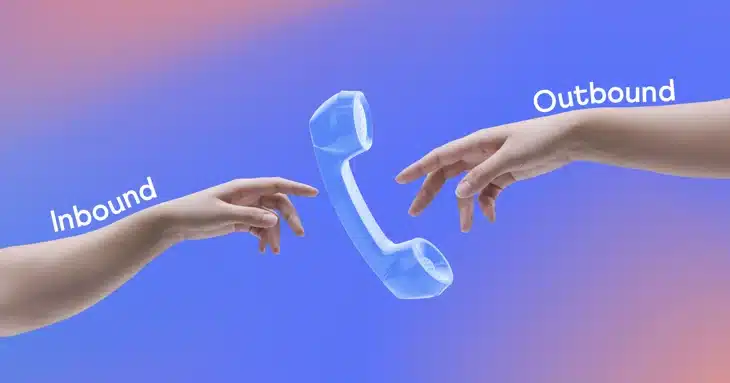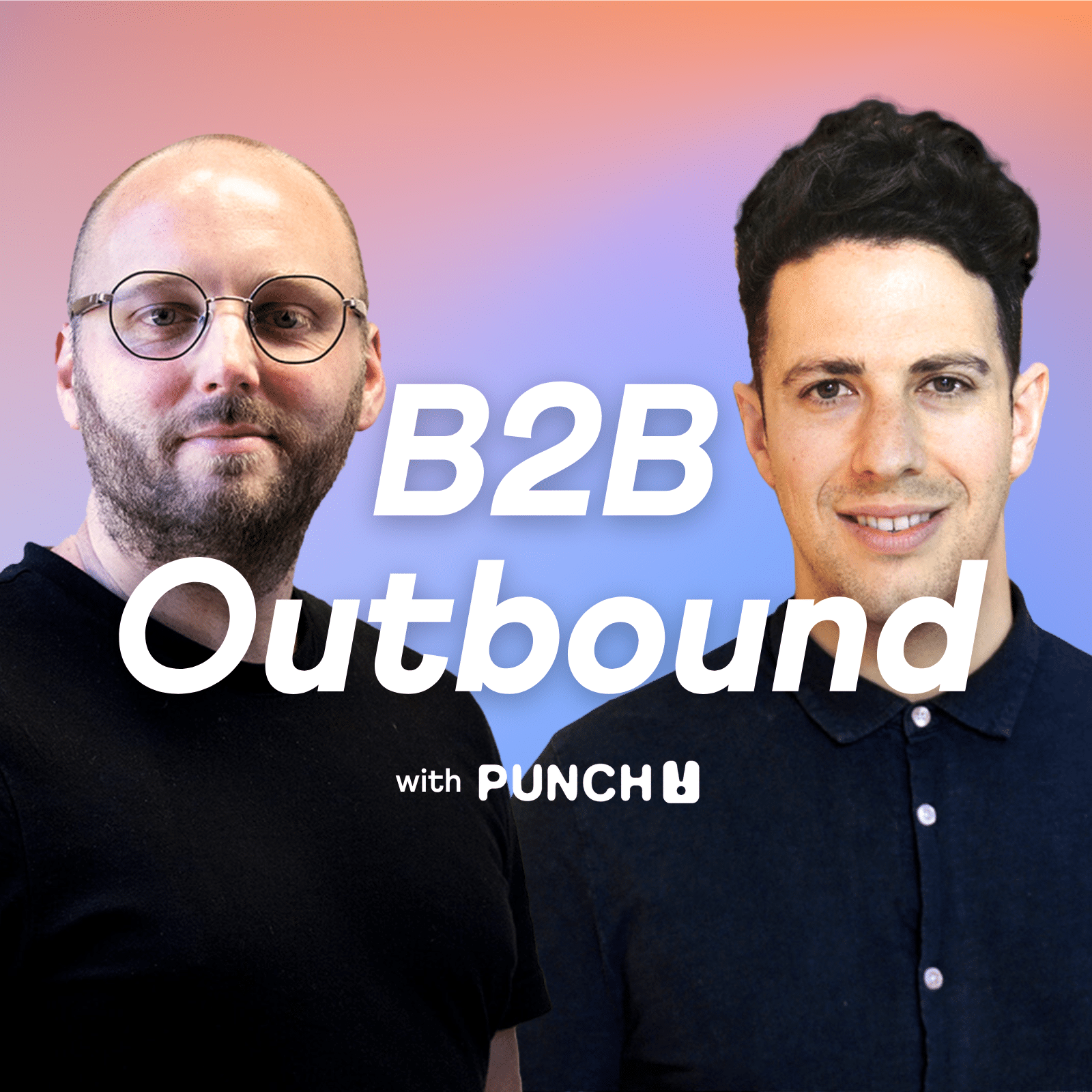At a glance
- Inbound leads are further along the buyer’s journey and have high purchase intent, while outbound leads require more nurturing but result in higher deal sizes and conversion rates.
- Outbound leads enter early and need education on their problems and potential solutions before considering a purchase.
- Avoid common mistakes like rushing outbound leads and treating all leads equally – inbound and outbound require tailored strategies based on their different mindsets.
Alright ambitious B2B brands, listen up. Not all leads are made the same.
To ramp up your pipeline, you need to understand the core differences between inbound and outbound leads.
This post will cover:
- How inbound and outbound enter the buying journey
- Contrasts in sales psychology
- Pros and cons of each lead type
- Common mistakes sales teams make
Let’s get into it! This is key to unlocking your lead generation potential
Table of contents
Defining Inbound vs. Outbound Leads
First, what defines these two lead types?
Inbound leads raise their hand by contacting you first or engaging on your site. They come from channels like SEO, social and paid ads.
Outbound leads are identified by your sales and marketing teams through cold outreach – emails, calls, direct mail.
Very different origins, but both can drive serious revenue. In fact, according to Forbes’ State of Inbound Report, outbound leads convert to sales at a 34% higher rate than inbound leads. While inbound leads bring value through their existing brand awareness.
The key is leveraging the unique strengths of both lead types for a balanced, high-converting pipeline.
Mapping Inbound vs. Outbound Journeys
Here’s where things diverge – inbound and outbound take very different journeys, entering the buying journey at different stages:
Buyer’s Journey:
Strangers (no awareness) → Awareness (learn about issues) → Consideration (explore options) → Decision (evaluate choices) → Purchase

Inbound Leads: Enter during the Consideration stage when researching solutions.
These leads identified a problem and started researching before you connected. They’re already inclined to buy, just need guidance to choose you.
Outbound leads aren’t sales ready like inbound. Sales needs to guide them through from their starting point.

Cold Outbound Leads: Enter at the Strangers stage with no existing awareness.
Cold outbound leads start with no problem recognition. Sales needs to put in significant work upfront to educate them on potential issues and solutions before they will consider change.

Warm Outbound Leads: Enter during the Awareness stage with some recognition of issues.
Warm outbound leads have some pain points identified but are still early in the journey. Sales needs to nurture their interest and expand their understanding of solutions.
Outbound outreach targets prospects who likely haven’t considered change. You first need to spark interest and educate them on potential solutions.
So inbound leads are further down the road. But outbound offers huge upside if nurtured properly. According to the DemandGen B2B Buyer Behavior Study, companies using outbound see 2x more revenue growth vs. inbound-only.
Cracking the Sales Psychology
Beyond the journey, inbound and outbound leads think differently. Cracking their mindset is key to conversion.
The psychology throughout the buyer journey:
Unsure → “This Sucks” → Seeks Solution → Establish Criteria → Evaluate Options → Decide → Purchase

Inbound Mindset: Inbound leads enter after establishing criteria, ready to evaluate options.
They know change is needed. Your role is steering them to your product. Inbound leads are closer to a purchase decision and sales should focus conversations on comparing solutions to identified needs.
Cold Outbound Mindset: Cold outbound leads enter at the Unsure stage with no sense of problems.
Outbound leads need awareness nurtured into interest before they’ll consider change. Patience and persistence pay off. Cold outbound require significant education on industry issues and challenges. Sales needs to spark that initial problem awareness.
Warm Outbound Mindset: Warm outbound leads enter after “This Sucks” stage with some pain points already established.
Warm outbound leads have some problem recognition sales can expand on. Presenting potential solutions tailored to their already existing pain points will nurture interest.
So on the face of it, an inbound strategy appears to bring in opportunities that require a lot less effort. So surely that’s where you should be focussing your strategy right? Well, not quite. Read on…
Pros and Cons of Outbound Leads
Outbound lead generation takes work, but provides control and high-value prospects. Companies using outbound strategies see 2x more revenue growth vs. inbound-only. (Source: DemandGen B2B Buyer Behavior Study)
Moreover, according to the ITSMA, ABM Benchmark Study, outbound campaigns generate 50% larger deal sizes on average. And Ascend2’s Inbound Marketing Strategies Survey shows that 78% of CMOs rank outbound highly effective for marketing reach.
Pros:
- Target ideal customers
- Increase awareness
- 50% higher deal sizes (Source: ITSMA, ABM Benchmark Study)
- Build strong relationships
Cons:
- More nurturing required
- Slower conversion rates
- Needs marketing and sales coordination
According to TOPO’s Lead Generation Benchmark Study, cold outbound to ICPs converts 30-50% higher than semi-warm leads. So while it takes effort, done right outbound delivers premium prospects.
Though it requires greater effort to educate completely unaware prospects, the payoff is higher conversion rates in the long run. With the right messaging and systematic nurturing, you can turn cold contacts into qualified opportunities.
So don’t underestimate cold outbound outreach. When targeted and executed correctly, it drives higher returns than warmer leads. Just be sure you have frameworks in place to nurture cold leads through their journey.
The Pros and Cons of Inbound Leads
Inbound also has its advantages and limitations too.
Pros:
- Higher purchase intent
- Less conversion effort
- Familiar with solutions
Cons:
- Unpredictable volume
- Quite Often Wrong Fit
- Downturn Dropout – volumes drop when buyers pull back in economic declines
- Lower deal sizes
Inbound signals intent, but outbound targets and nurtures high-value accounts.
Key Comparisons
Here are some top level inbound vs. outbound contrasts:
| Inbound | Outbound |
| Enter late in journey | Enter early in journey |
| Already have pain points | May be unaware of issues |
| High existing interest | Requires education |
| Less nurturing needed | More nurturing required |
| Lower deal sizes | Higher deal sizes |
Avoiding Common Mistakes
Given the differences, here are key mistakes to dodge:
- Skipping the education phase: Unlike inbound leads, outbound leads need education on their pain points and solutions first. Don’t overlook this crucial awareness-building phase.
- Insufficient sales enablement content: Similarly, outbound leads require significant decision-making content to inform them; case studies, educational resources, and even training. Failing to provide this leaves them unprepared to purchase.
- Rushing the sales process: Outbound leads need more time to consider options versus inbound. Rushing them can lead to lost opportunities. Have more conversations to guide them through the journey.
- Treating all leads the same: While inbound and outbound both bring value, they cannot be treated equally. Develop customized strategies spanning messaging, content, and sales processes tailored to where each lead is on their journey.
The key? Mapping your outbound strategy to the unique needs of outbound leads.
Recap
Not all leads are created equal. Inbound and outbound involve:
- Different stages in the buyer’s journey
- Contrasting sales psychology
- Unique pros and cons
Treat them as two separate lead types with tailored game plans.
We’ll dig into specific inbound vs. outbound strategies in future posts. But for now, avoid one-size-fits-all thinking at all costs!
And remember, according to TOPO’s Lead Generation Benchmark Study, cold outbound to ICPs converts 30-50% higher than semi-warm. So, don’t underestimate the power of a well-executed outbound strategy!





